In late May, a Bloomberg report went viral on the internet saying that a US-based electric vehicle company named Rivian is seeking an IPO with an estimated valuation of about $70 billion. This IPO is expected to be the biggest one this year! Amazon-backed Rivian is not directly conducting any business activities in China, which makes it relatively unknown to the Chinese people.
At present, Rivian has an estimated valuation of nearly $27 billion. Since 2019, it has received $8 billion in investments, of which $2 billion comes from Amazon’s Climate Pledge Fund. Not only is the company backed by technology giants, but Ford is also closely related to Rivian. Apart from investing $500 million, Ford plans to use Rivian’s platform to develop its own electric vehicles.
In the past year, Rivian has hired more than 3,000 employees, with about 130 of them being former Tesla employees. This move has led to Tesla filing a lawsuit against Rivian in July last year, alleging that Rivian tried to steal Tesla’s trade secrets by recruiting its employees. Rivian refuted the allegations, stating that this lawsuit was aimed at stopping their rising momentum and intimidating its employees who wanted to leave Tesla.
In January this year, Victor Prajapati, who was responsible for Tesla’s 4680 battery production and also played a significant role in turning around Tesla’s Model 3 production, joined Rivian as its manufacturing engineering director.
Until now, both companies are still attacking each other in public. As for this low-key but controversial American-made new force in the auto industry, I believe that many of us are very curious. Let me introduce Rivian to all of you.
Rivian’s “Origins”
To talk about Rivian, we need to start with its founder RJ Scaringe.# Scaringe’s Entrepreneurship Journey from MIT to Avera and Rivian
RJ Scaringe, a 26-year-old mechanical engineering PhD student at MIT’s Sloan Automotive Lab, under the guidance of Professor Wai K. Cheng, conducted in-depth research on how to expand load constraints for homogeneous charge compression ignition engines (a low-emission internal combustion engine). However, this was not directly related to his future work on electric vehicle technology.
After graduating, Scaringe chose to bravely embark on his entrepreneurship journey instead of pursuing scientific research like his peers. Thus, Avera, the predecessor of Rivian, was born.
Of course, Robert P. Scaringe, RJ Scaringe’s father and founder of Mainstream Engineering (a company engaged in thermal control and energy conversion products with stable military customers), provided significant support for his son’s career start-up in terms of funding, talent, and even engine hybrid technology.
The initial team included design director Peter Stevens, a renowned designer who had achieved many classics, such as the Jaguar XJR-15 and McLaren F1; manufacturing director Adrian Elliot, a 17-year Ford materials scientist; and CFO Jim Thomas, the former COO and CFO of Mapquest.
In 2009, Avera, with only about 20 staff, received a “grant” of $2 million from the Florida government as initial capital for its hybrid 2+2 coupe, the “Avera coupé,” and focused on its development during the following two years. Avera’s early plan was also to release a car with industry-leading fuel efficiency around 2013.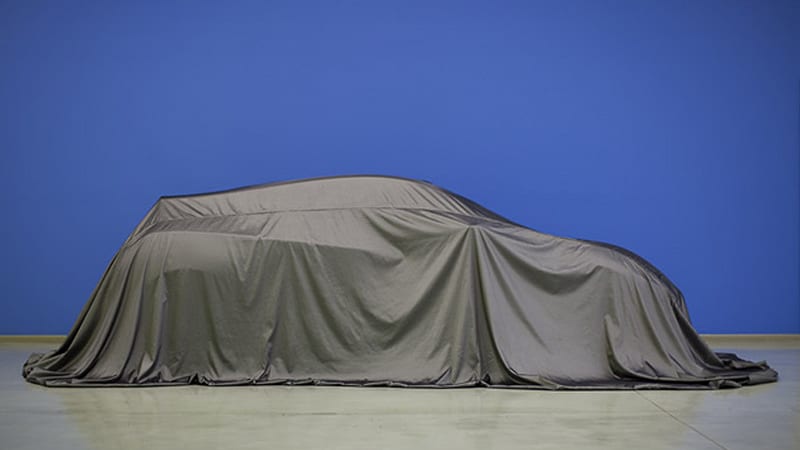
In late 2010, Avera unveiled the prototype of its Avera coupé in Rockledge, Florida, which boasted “super car-like handling and aggressive looks” and was estimated to retail for around $25,000.
However, we have yet to see the full version of this car to this day. This is because Scaringe rethought the company’s direction and decided to shelve the hybrid sports car plan and instead focus on electric vehicles, which led to the concept of the “Electric Adventure Vehicle.”

In March 2011, Avera officially renamed itself Rivian and also replaced its logo. According to Scaringe, part of the reason for the name change was to pay tribute to the Indian River Lagoon, where the company was headquartered. However, the main reason was that Hyundai had already registered and was using the “Avera” trademark, which led to a lawsuit against Avera and forced the company to rename itself as Rivian.
In 2015, Rivian relocated its headquarters to Livonia, Michigan. In 2017, Rivian purchased the old Mitsubishi plant in Normal, Illinois and received five years of tax abatement and a million dollar grant. Rivian has committed to hiring about 1,000 employees by 2024 and investing $405 million over the next five years.
At this point, Rivian has not yet displayed a pure electric prototype vehicle to the public, but it has already begun to lay out the production line. In contrast, at the same time, Faraday Future, which had loudly announced its prototype vehicle and attracted the attention of the capital, was struggling to find a factory for production.
The Power of Exploration – Pickups and SUVs
“In the next 10 years, 100 years, or 1,000 years, humanity’s desire for exploration will not change. I have thousands of years to prove this point,” Scaringe summarized the company’s product direction.
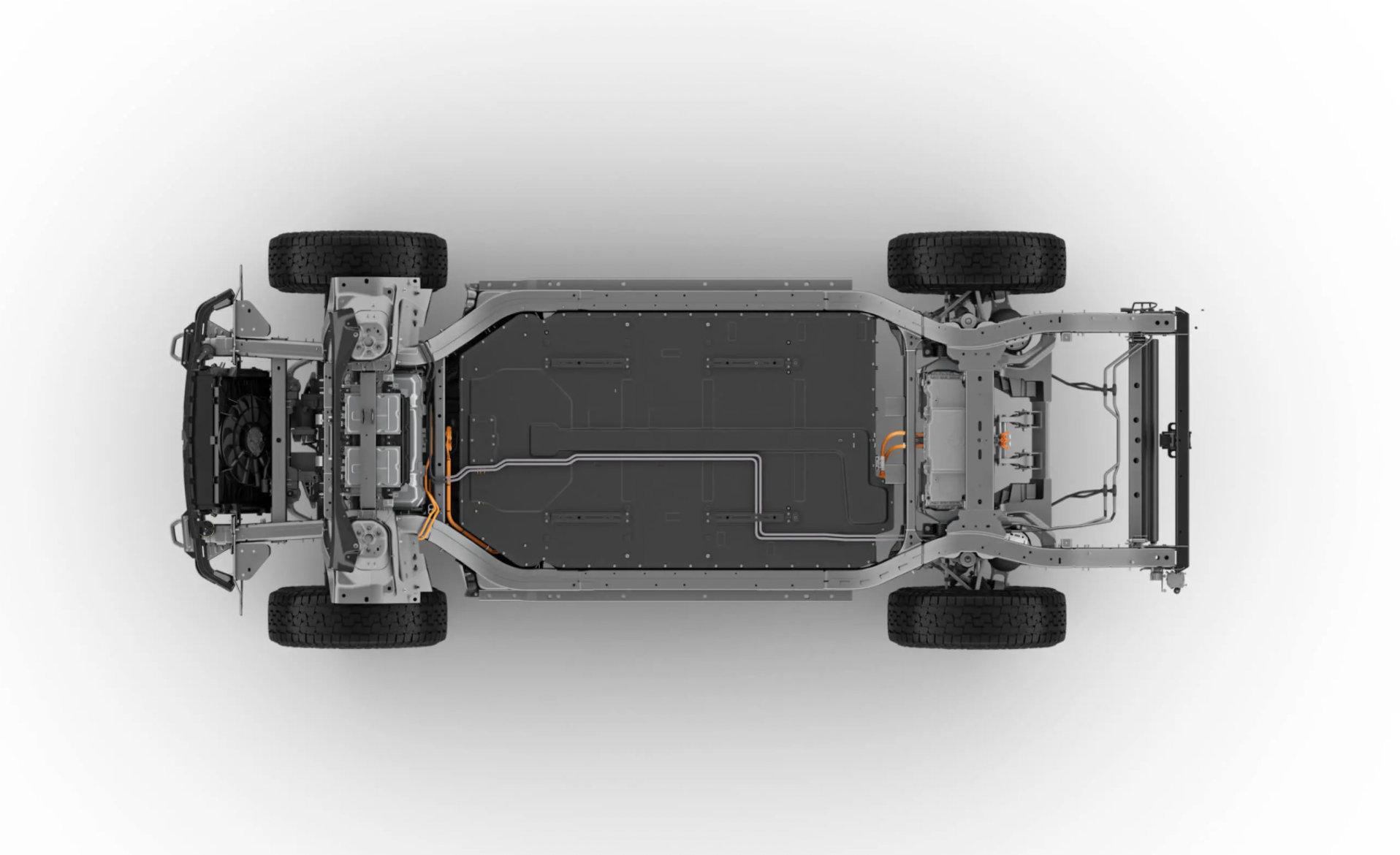 In November 2018, Rivian released two Electric Adventure Vehicles, the R1T electric pickup truck (priced at $67,500 to $73,000) and the R1S electric SUV (priced at $70,000 to $75,500), built on the Skateboard Platform.
In November 2018, Rivian released two Electric Adventure Vehicles, the R1T electric pickup truck (priced at $67,500 to $73,000) and the R1S electric SUV (priced at $70,000 to $75,500), built on the Skateboard Platform.
R1T and R1S
The R1T was originally set to be delivered in June 2021 but has been delayed to July, while the R1S will be delivered in August. The first batch of vehicles will be equipped with 135 kWh battery packs, while the 180 kWh version will be delivered in January 2022.
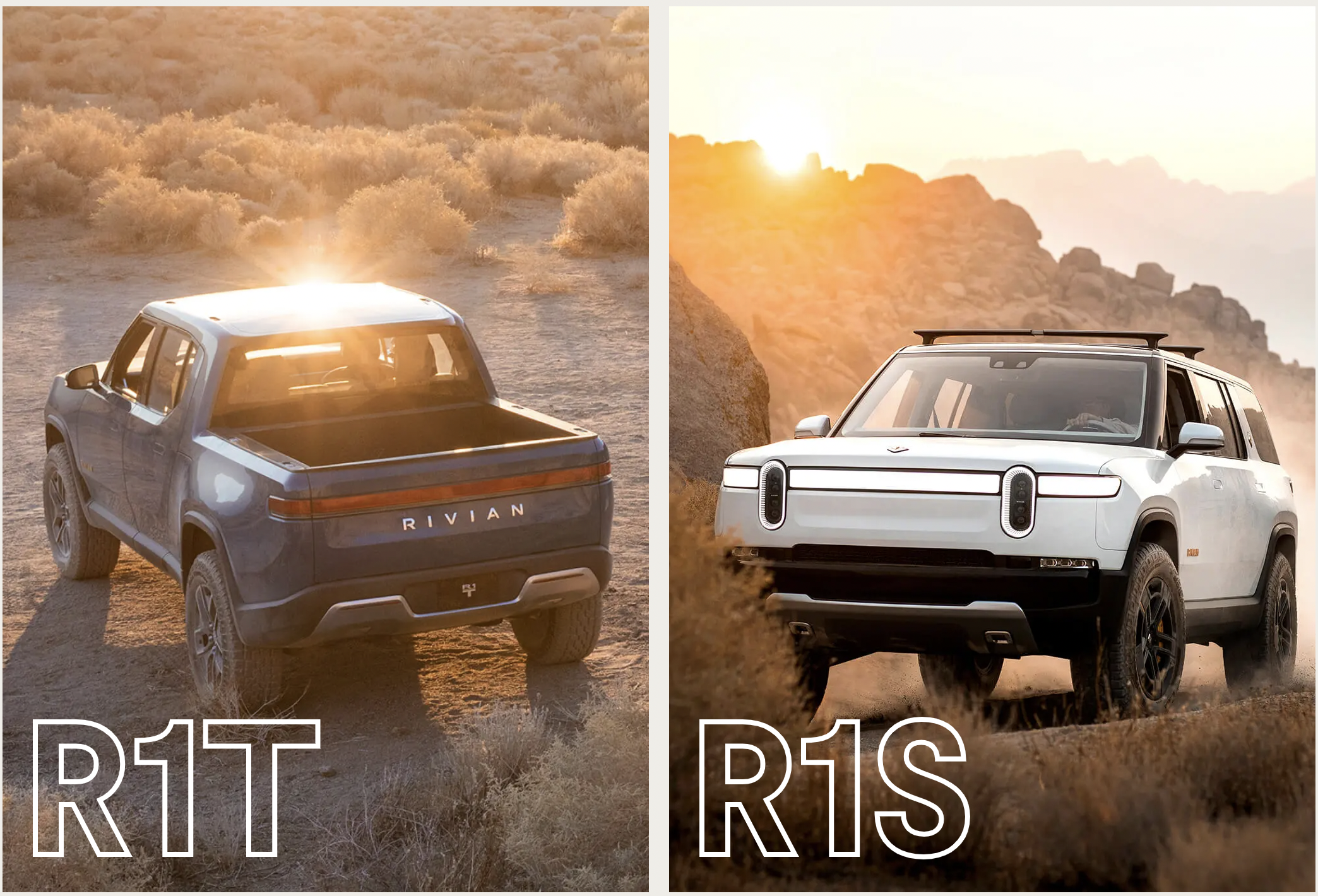
Before the delivery, let’s take a look at the specifications for these two vehicles:
-
The electric drive system is composed of four motors. Each motor can provide a maximum power output of 147 kW and achieves precise vector torque control, such as the “tank turn” achieved by reversing the rotation of the wheels on the left and right sides. The entire power system has a maximum power output of 562 kW and maximum torque of 1,120 Nm, with the ability to go from 0 to 60 miles/hour in as quickly as 3 seconds.
-
The battery pack comes in three versions: 105 kWh, 135 kWh, and 180 kWh, and uses 2170 battery cells supplied by LG. The EPA ranges are 230 miles, 300 miles, and 400 miles (all R1S models have an additional 10 miles of range). They support up to 160 kW DC fast charging.
-
The Rivian R1 series battery is cooled axially by a central cooling plate, with no cooling devices between each battery cell, which can improve energy density through tight packing. The battery pack heating relies on the heat generated by the drive system and inverter, rather than using independent heaters with higher energy costs. Rivian claims that at -40 degrees Celsius, it only takes 20 minutes to achieve full power output.
-
The suspension structures for both vehicles on the Skateboard Platform are essentially the same, consisting of a front double-wishbone and rear multi-link suspension system, working together with dynamic roll control and adaptive shock absorbers, as well as a height-adjustable air suspension (with a minimum of about 20 cm and a maximum of around 37 cm). They can drive through water up to 3 feet (about 1 meter) deep. They are even equipped with an onboard air compressor and a 150 psi (about 10 bar) air gun.- The perception hardware in the intelligent driving system includes: 10 cameras, 12 ultrasonic radars, and 5 millimeter-wave radars. This system named Driver+ is a standard configuration for two models, which can realize functions such as turning signals and lane changing, and will be upgraded over the air to the navigation function on some highways;
-
The cabin of both vehicles are equipped with a 12.3-inch instrument panel and a 15.6-inch central control screen. There is also a 6.8-inch rear touch screen in the back seats. It supports 4G network and Wi-Fi function, wireless induction charger, multiple USB charging ports, multiple 110V sockets, and Amazon Alexa voice commands. The vehicle status can be updated and controlled through the cloud;
-
The standard comprehensive warranty period of Rivian is 5 years or 60,000 miles. The warranty for battery packs and drivetrains is 8 years or 175,000 miles. The limited anti-corrosion warranty is 8 years, unlimited mileage;
-
The Rivian R1 series has a spacious front cargo box, sized at 25.4 x 54.8 inches, with a depth of 22.7 inches.
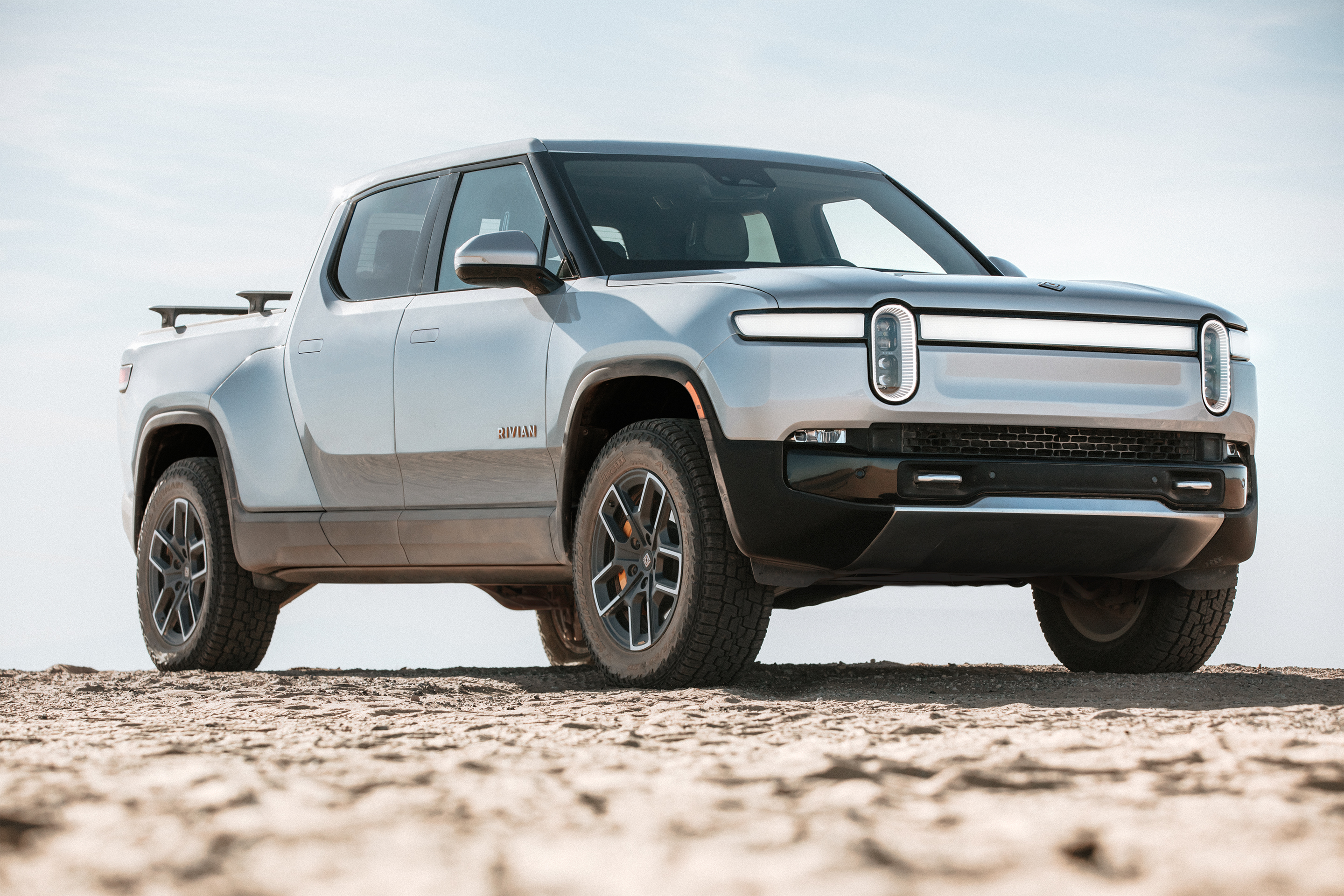
Due to different positioning, there are differences in size, weight, capacity, payload, and cruising range between the two vehicles. The appearance of R1T is not as radical as Cybertruck, and the entire body retains the traditional mainframe of a pickup truck. A sense of technology is created by a thick light strip extending through the front of the car and two large oval-shaped headlights.
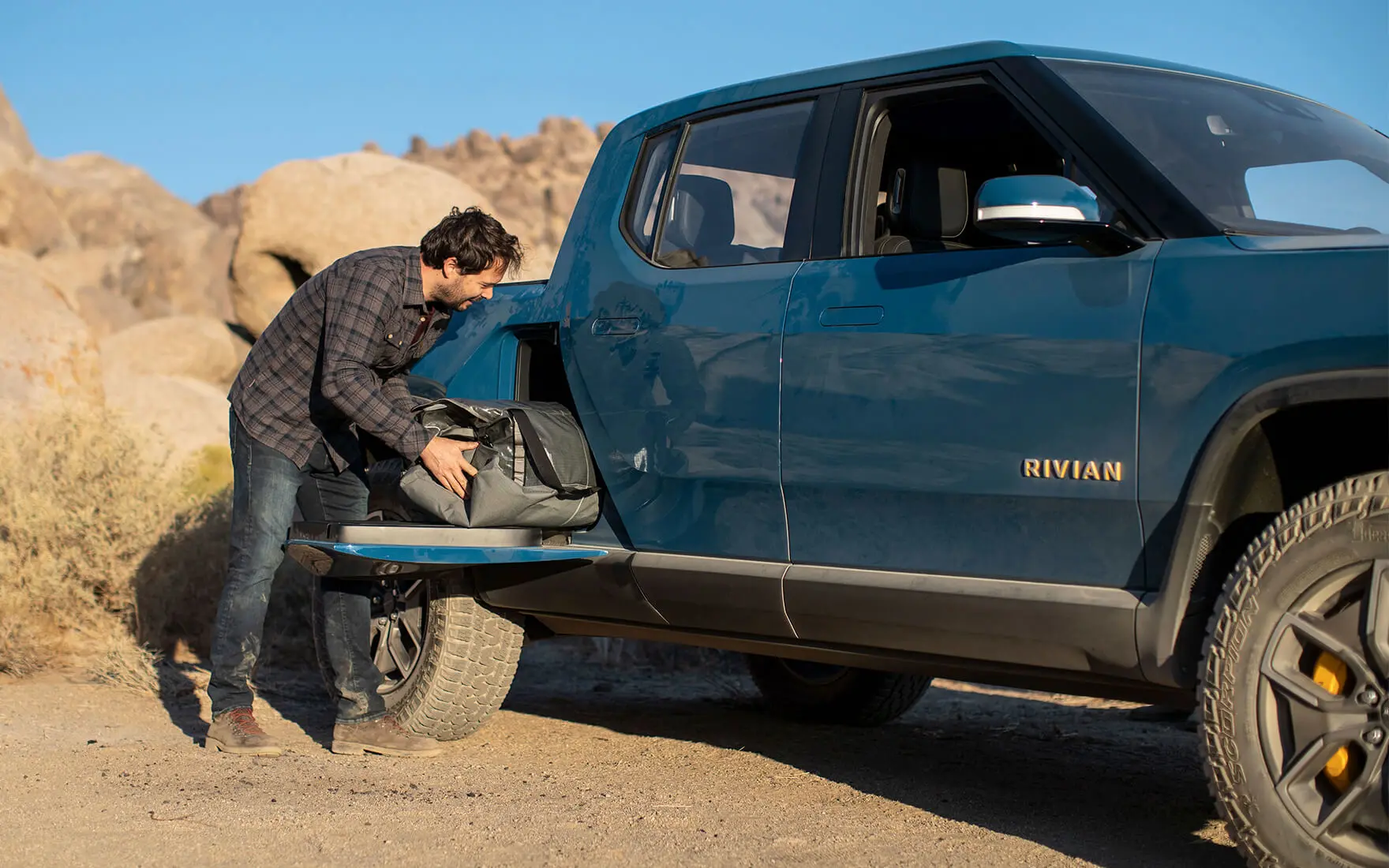
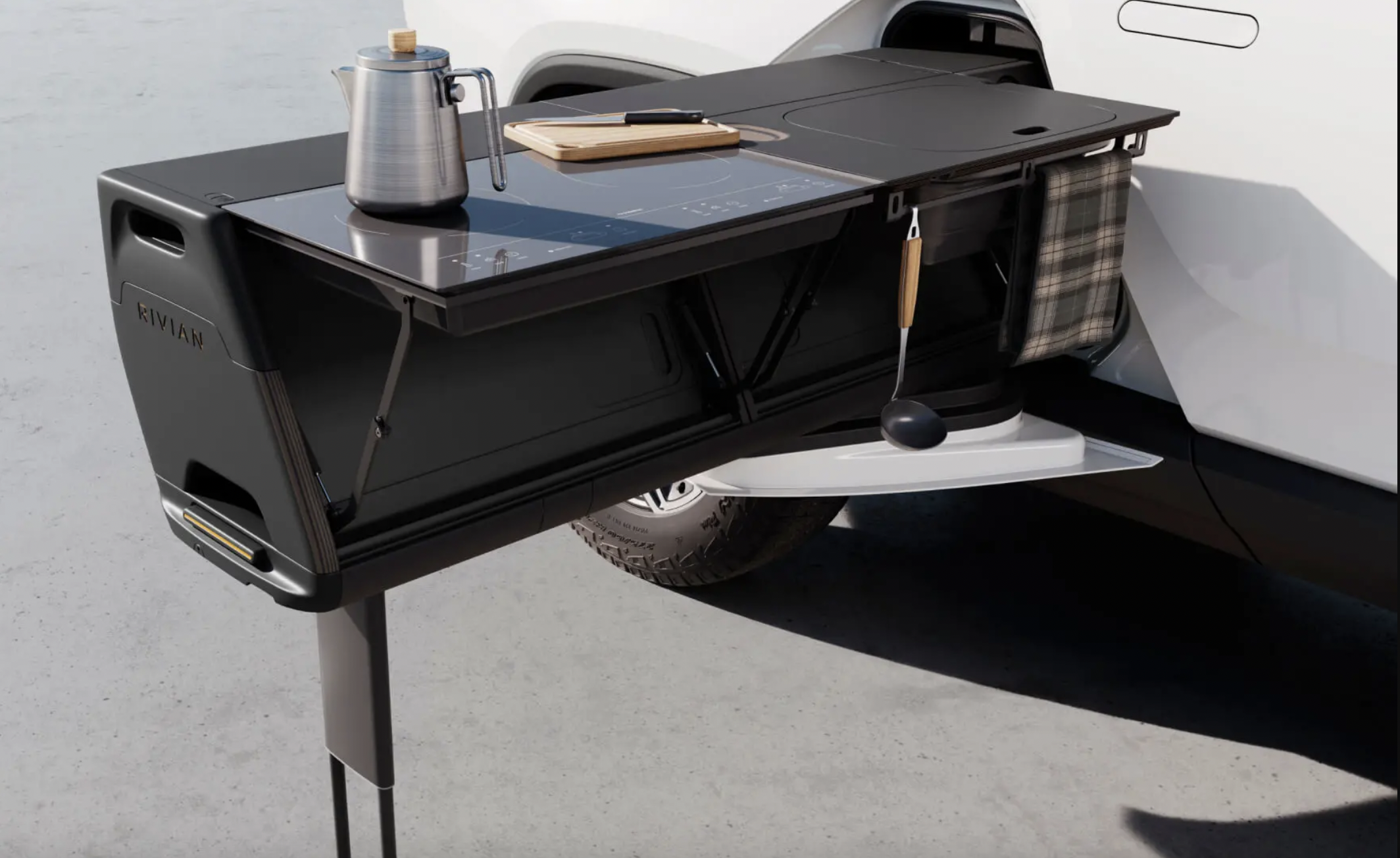
The “Gear Tunnel” function, which runs through the entire transverse body behind the second-row compartment, has a capacity of 11 cubic feet (about 310 L) and can bear 300 pounds (about 130 kg), and has multiple functions. Of course, you can also choose to install the “camping kitchen” kit for convenient cooking in the wilderness.
The biggest difference between R1T and traditional pickup trucks is the significant reduction in “tool property” and the great promotion of “exploration property”. The front compartment, gear tunnel, and bed effectively separate wet and dry items, and the built-in air gun can clean dirt off the body.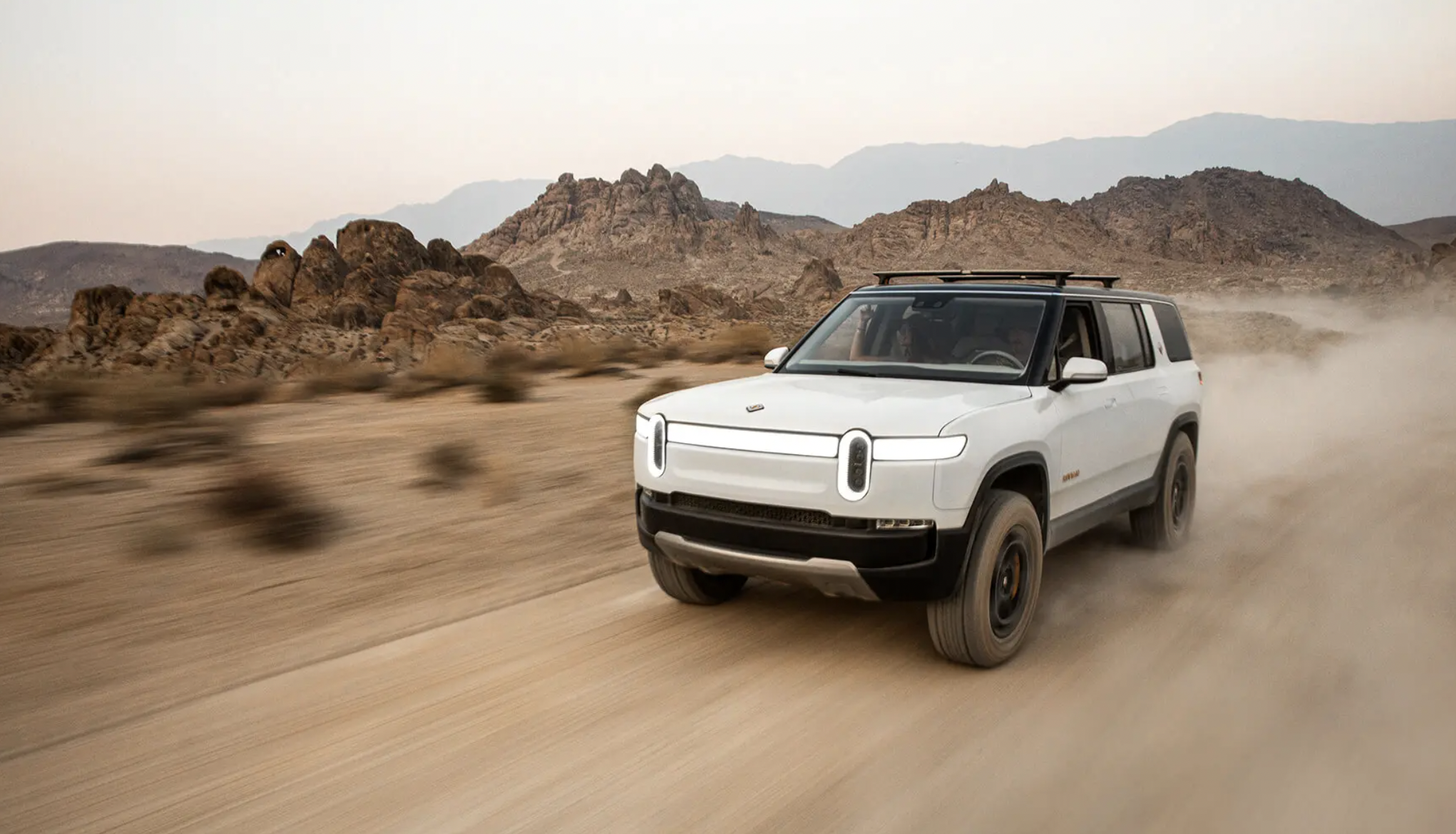
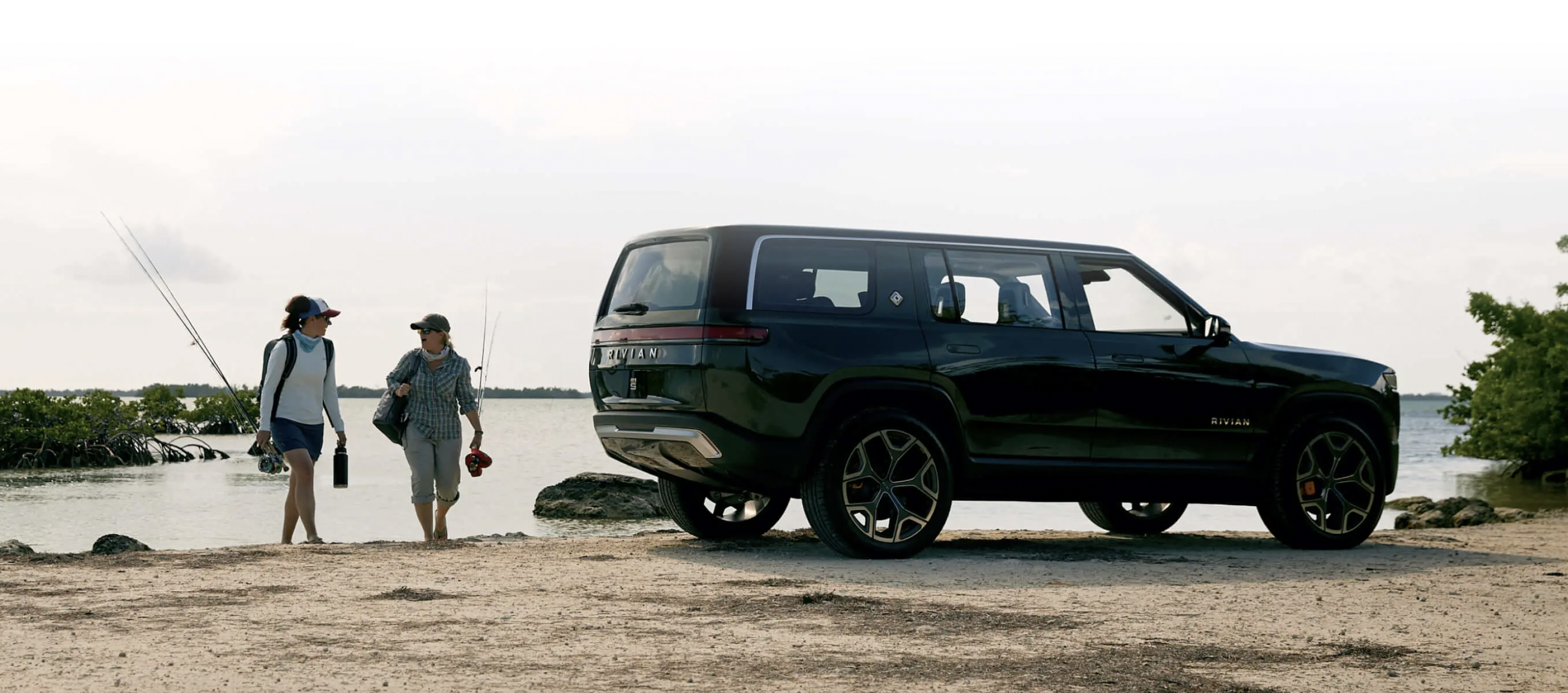
The appearance of the R1S is basically the same as the R1T, with a higher price bringing a fully enclosed body and two additional seats in the third row, but the equipment pass-through function has disappeared.
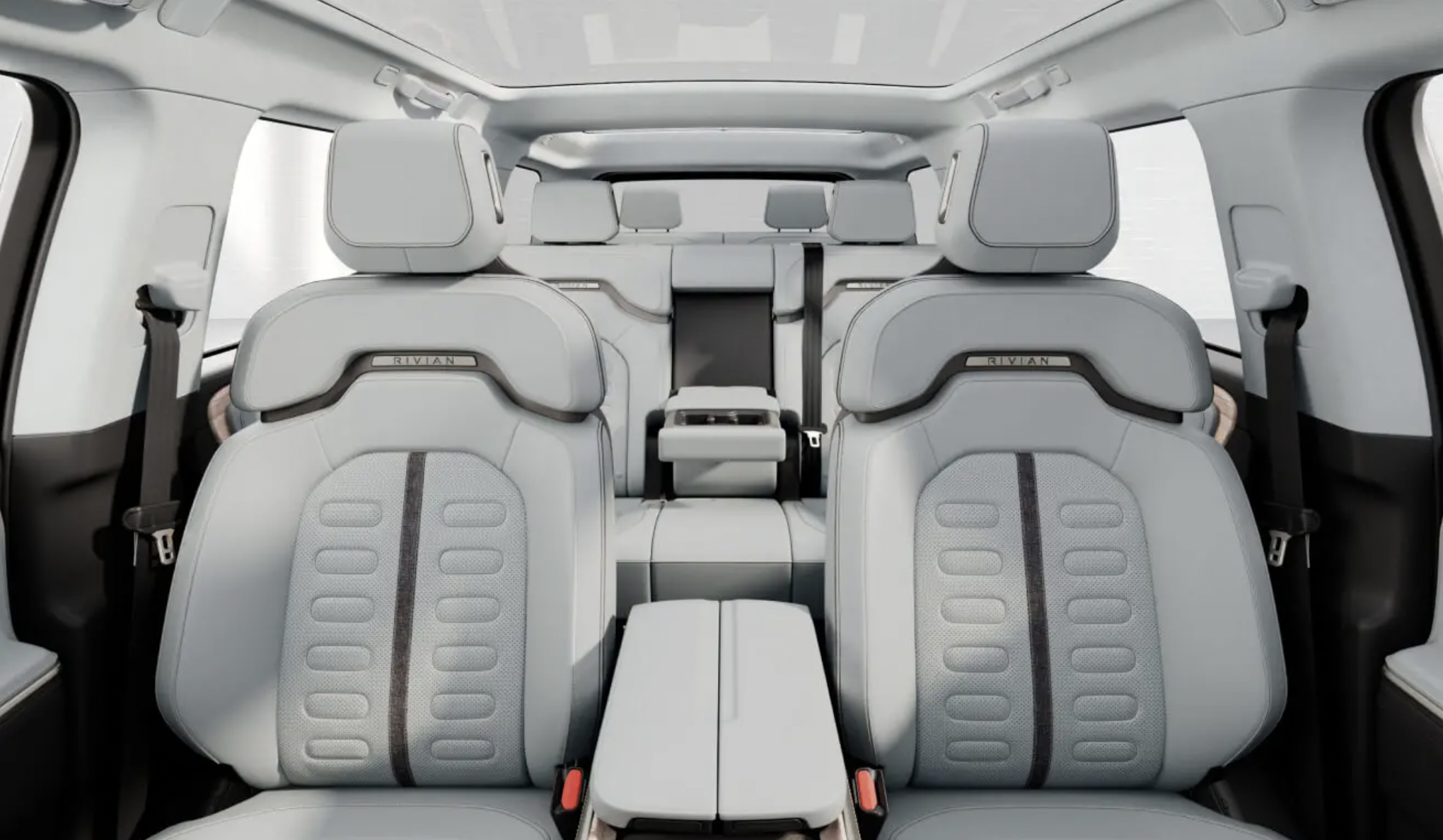
Prime Van
In September of last year, Rivian signed an agreement with Amazon, a major customer and investor, to provide electric box-type delivery vans. The agreement calls for 100,000 electric box-type delivery vans to be produced by 2030, with 10,000 of them on the road by the end of 2022.
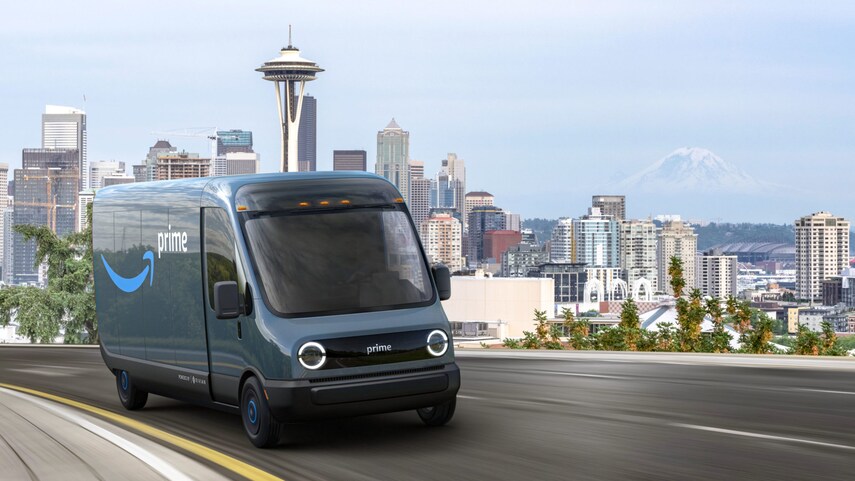
The cute and adorable Prime Van is built on the skateboard platform and shares the basic electrical network architecture, ECU, and battery pack with the Rivian R1 series. It also offers cargo versions with capacities of 500, 700, and 900 cubic feet.
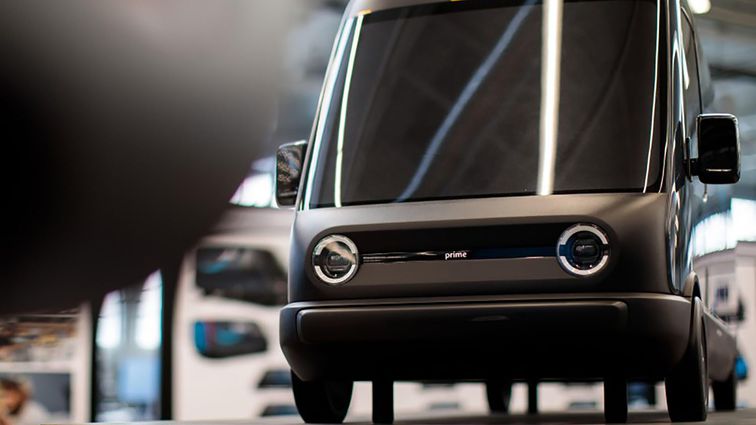
Amazon’s direct-to-consumer Prime membership business can be said to be the prototype of China’s JD.com and Tmall membership delivery services. Amazon’s choice to use Rivian’s products is due in part to its desire to improve its environmental image through electrification.
In Rivian’s first year of mass production in 2021, they have a sizable production plan, and Scaringe promises to produce about 20,000 to 40,000 vehicles.## Beyond the Products
Rivian doesn’t just focus on the vehicles themselves. They are strengthening their soft power through multiple measures such as building a widespread charging network, direct sales stores, and modular production models.
About Charging
Rivian offers quite rich charging solutions, covering DC Super Charging, AC Slow Charging, Wall Mount Home Charging, and Portable Charging, which almost cover all usage scenarios of users.
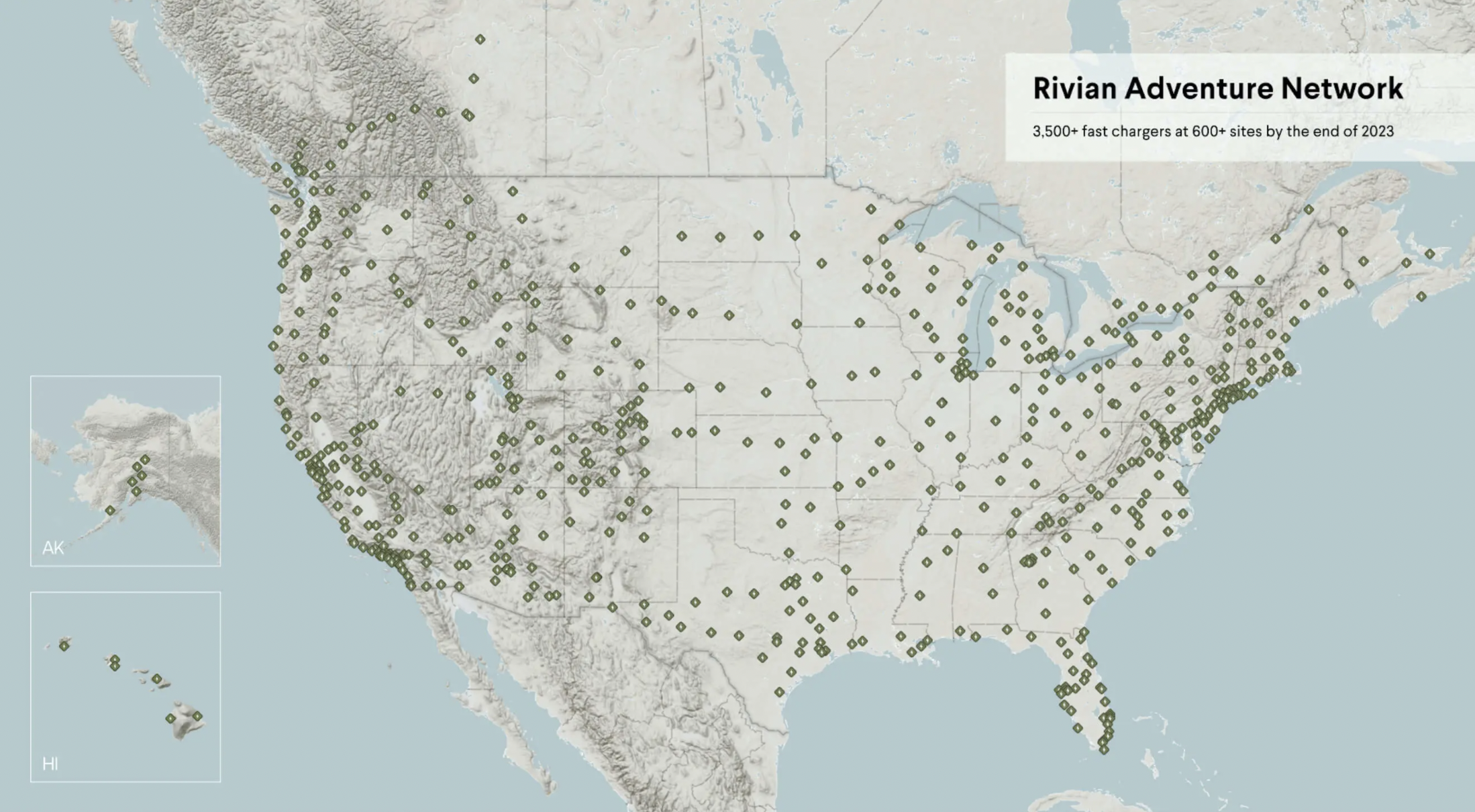
The Rivian Adventure Network is Rivian’s DC fast charging network, planning to establish more than 600 charging stations by the end of 2023, equipped with more than 3,500 DC fast charger. This charging network will connect popular routes in the United States and Canada with cities along the way and further extend to more remote locations.
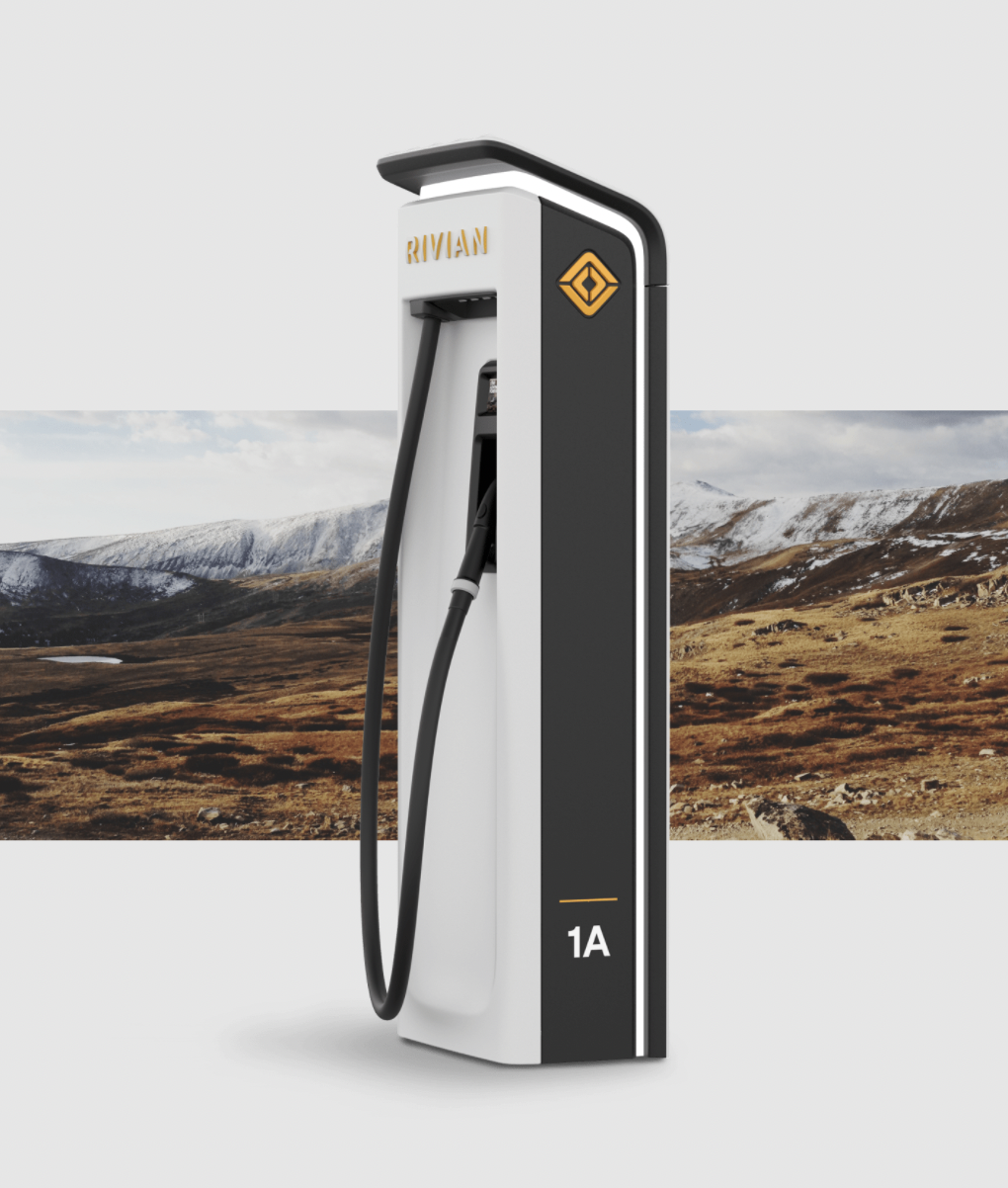
The Rivian Adventure Network charging network under construction will achieve plug-and-charge charging experience with an initial charging rate of over 200 kW. In future plans, the charging rate will be increased to more than 300 kW. Due to the cloud-based connection, the in-vehicle navigation will also automatically plan the charging route.
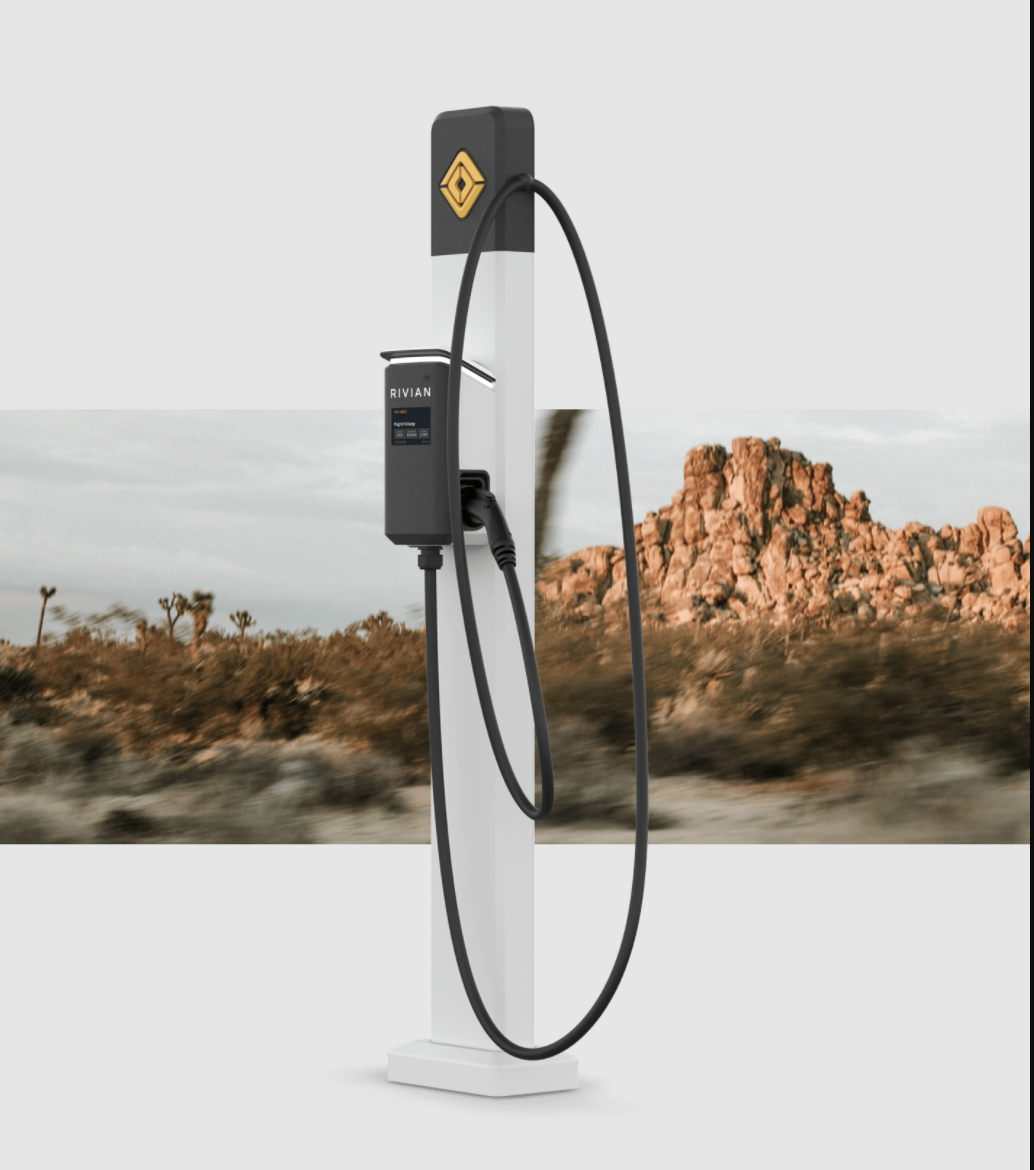
In addition to the construction of Super Chargers, Rivian has also installed over a thousand “Rivian Waypoint” AC charging piles in places such as supermarkets, shopping centers, hotels, restaurants, and parks, providing a charging power of 11.5 kW. Rivian owners can achieve plug-and-charge, and the Rivian Waypoint also provides charging services to the public. They plan to install more than 10,000 Rivian Waypoint AC charging piles by the end of 2023.“`
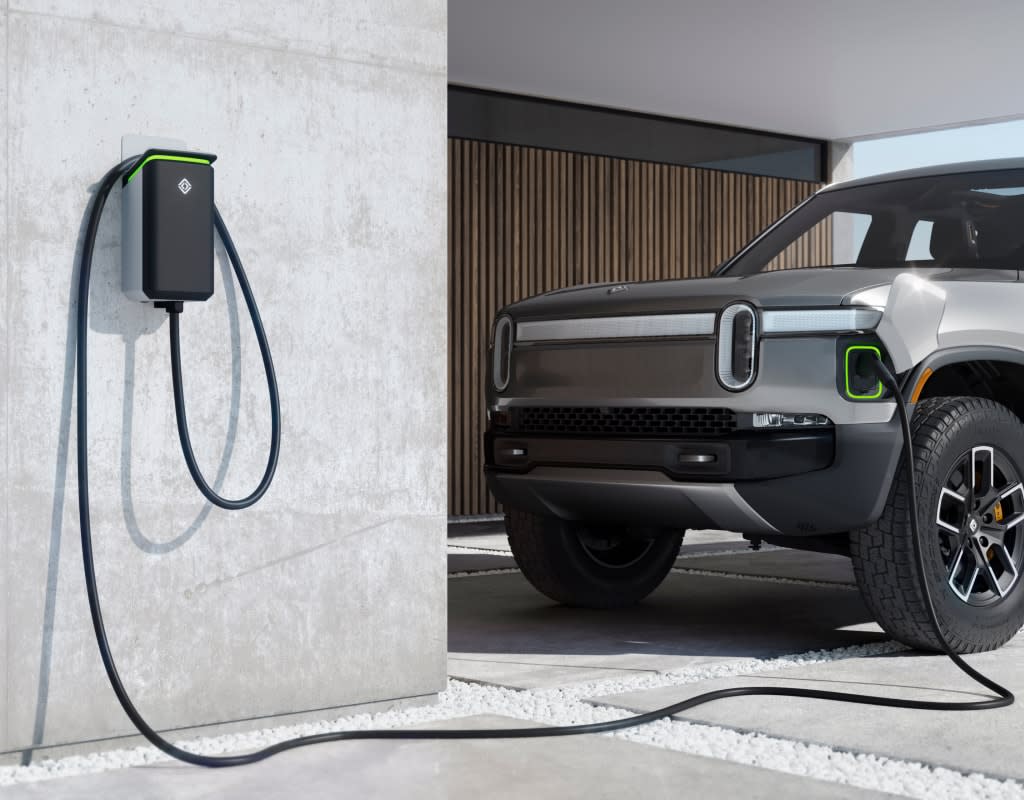
For the most convenient charging scenario, Rivian has launched a wall-mounted home charger that can be installed outside and generates a power of up to 11.5 kW, just like Rivian Waypoint. It has WiFi connectivity and can be updated via OTA.
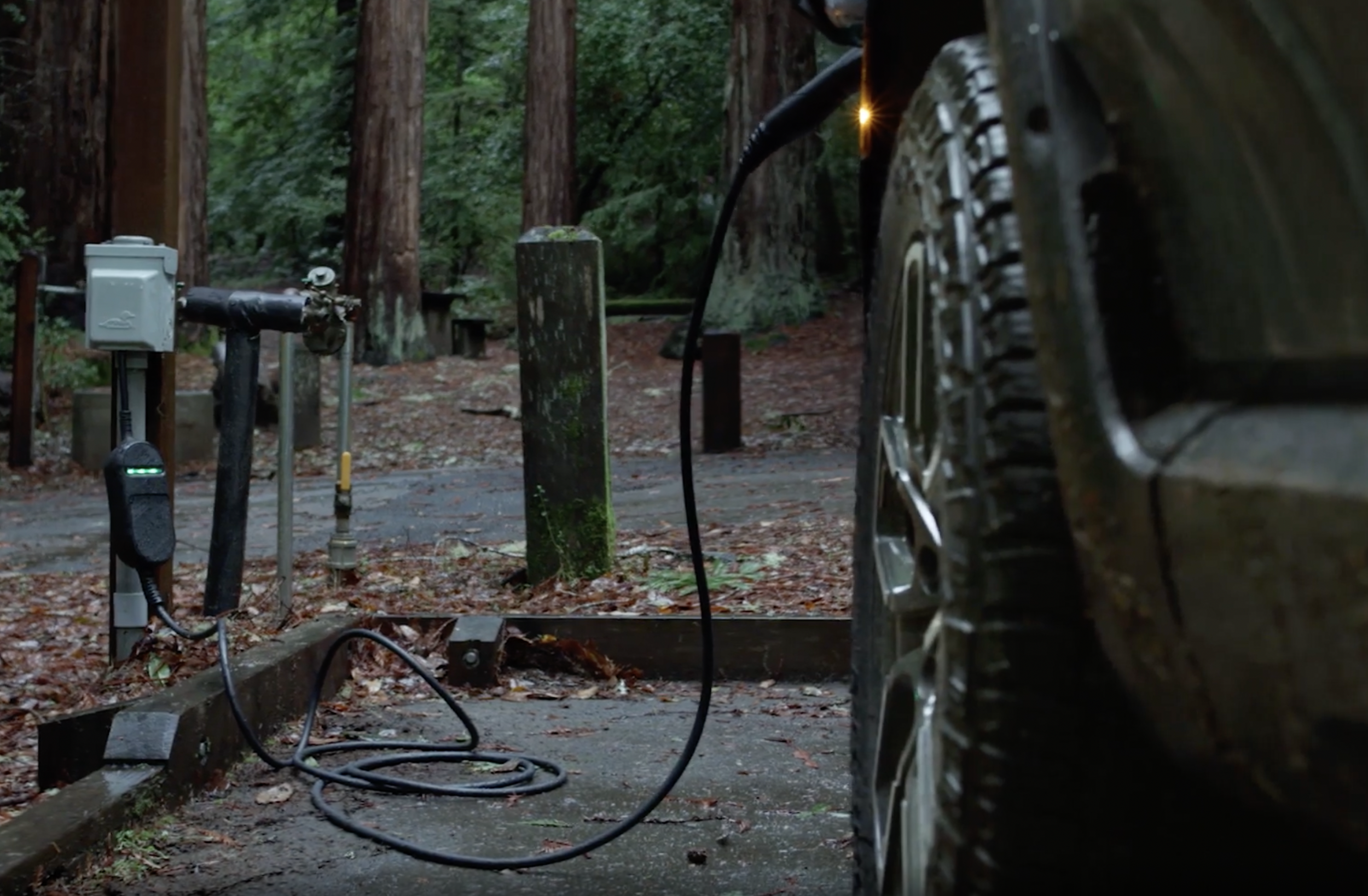
All Rivian models come standard with an 18-inch maintenance-free portable charger that can charge 16 miles per hour when connected to a 240V socket and can also be charged with a lower voltage of 120V.
Normal Factory
In 2017, Rivian purchased the Normal Factory, which covers an area of 240,000 square meters, and increased its factory area by about 74,000 square meters. Scaringe promised to produce 20,000 to 40,000 cars in the first full year of production in 2021.
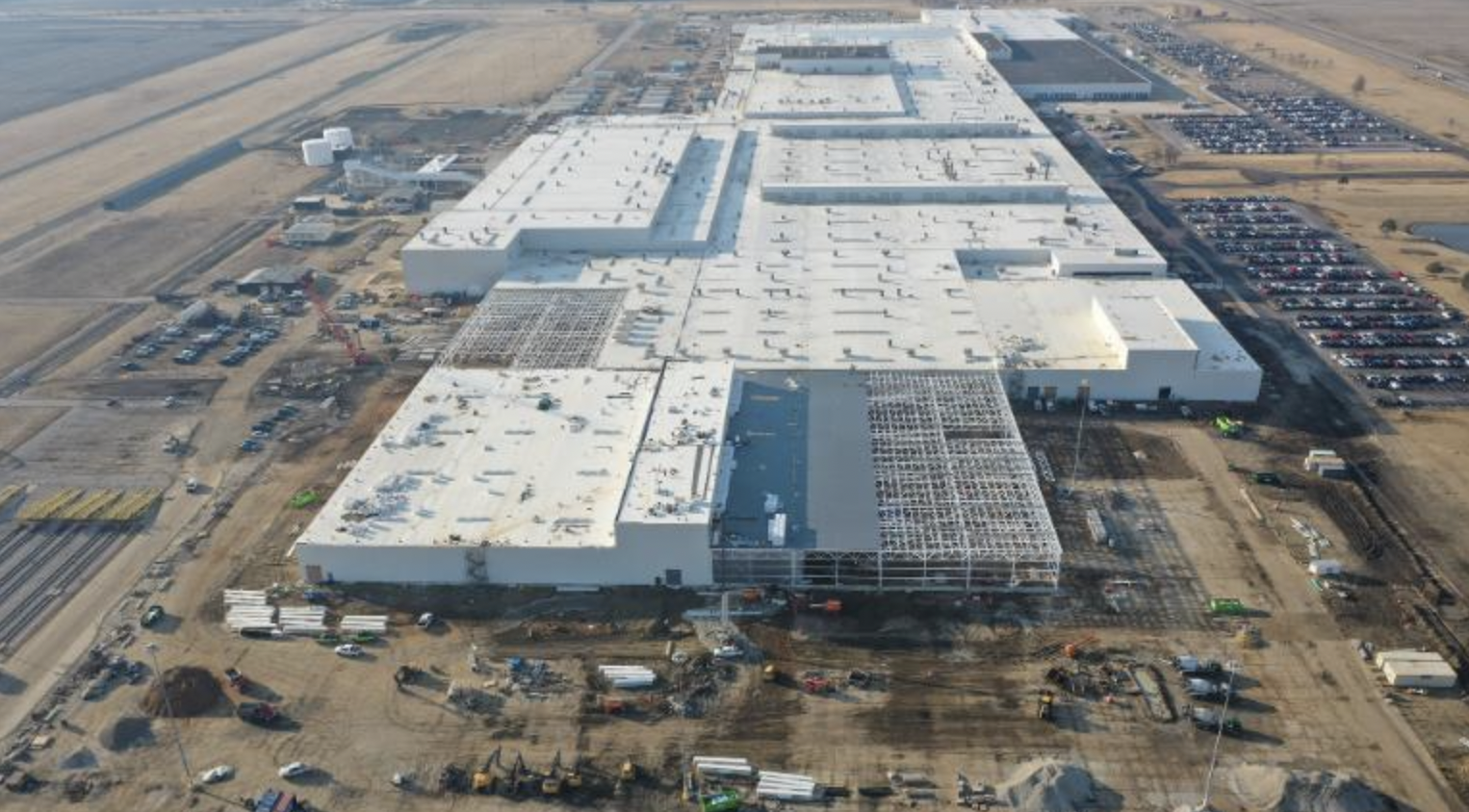
In the Normal Factory, Rivian has separate assembly lines for the R1 series and Prime Van, which have differences in manufacturing processes due to the different materials used. All vehicles share a stamping workshop with six large punching machines and a paint workshop for vehicle body corrosion protection.
Sales and other markets
Like Tesla, Rivian adopts a direct sales model for its sales. Rivian is working hard to lobby for changes in some states in the US that prohibit direct sales. Scaringe stated that R1S models will be introduced to the Chinese and European markets in 2022. In the future, two small electric vehicles based on the skateboard platform will become the main sales force of the brand in China and Europe. Thanks to the commonality of related components, economies of scale can be further leveraged.
“Huan” and “Liang” are born alike.# Rivian vs. Tesla: Two American Electric Vehicle Companies on the Same Path
Although Rivian and Tesla have had disputes over employee issues, these two American electric vehicle companies share the same vision of promoting direct sales, establishing supercharger networks, and launching pickup truck products. Even Rivian employees’ admiration for Scaringe mirrors Tesla employees’ and fans’ admiration for Elon Musk.

It is natural to compare the two companies, though they are currently in different stages. However, Rivian’s smooth financing, fresh marketing style, robust planning of products and factory production, and the Scaringe family’s extensive network of capital, have attracted many investment institutions.
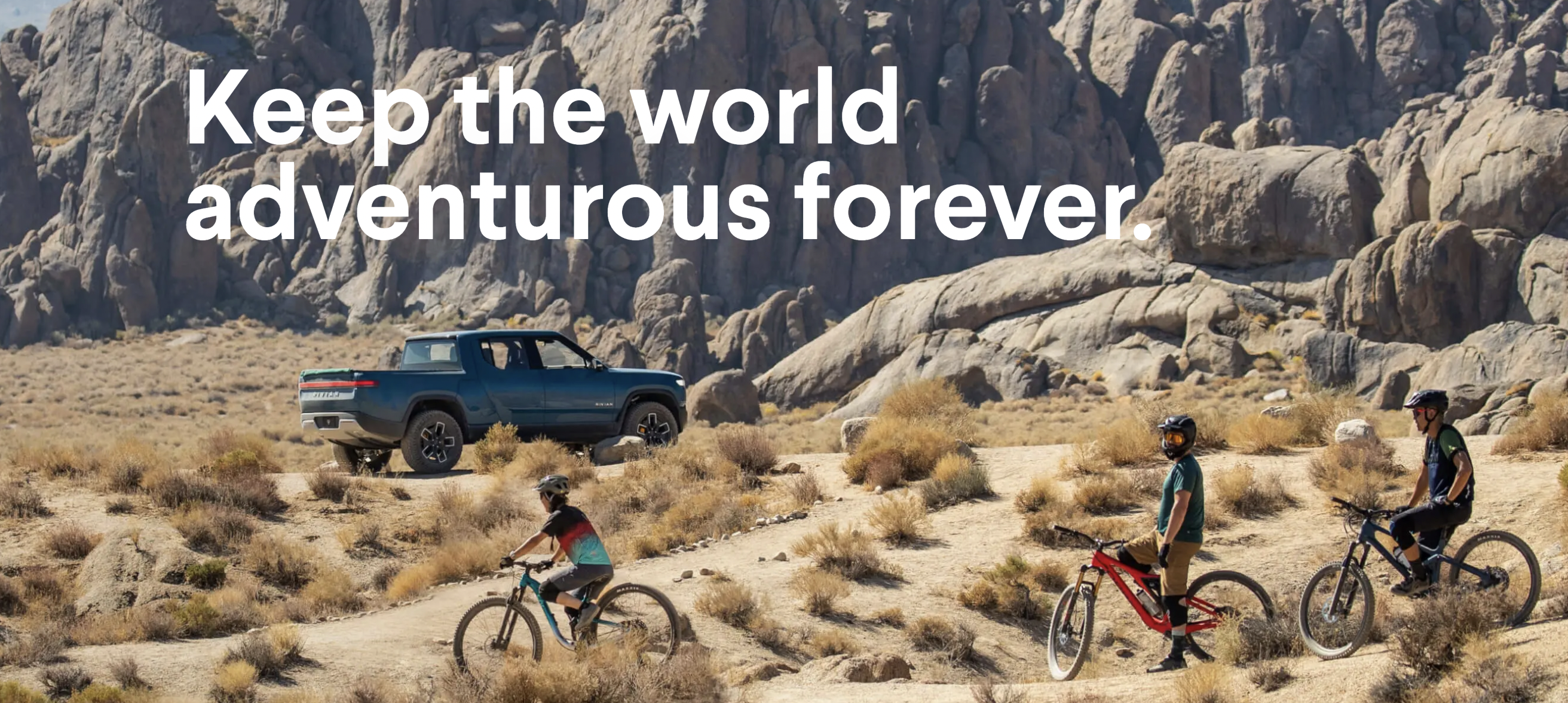
Under the concept of “Electric Adventure Vehicle”, Rivian’s unique, high-end, stylish brand and product has become the first impression for some people. From the market response, the initial release of the two models of Rivian’s R1 series have already sold out.
The main competitors in the pure electric pickup truck market, the HUMMER EV, F-150 Lightning, and Cybertruck, will not be delivered until 2022. Therefore, it is expected that Rivian’s R1T, which will begin delivery next month, will become the first pioneer in the pure electric truck field. This 4-motor truck that features an adventure style will have its moment of glory and more challenges under the spotlight.
This article is a translation by ChatGPT of a Chinese report from 42HOW. If you have any questions about it, please email bd@42how.com.
